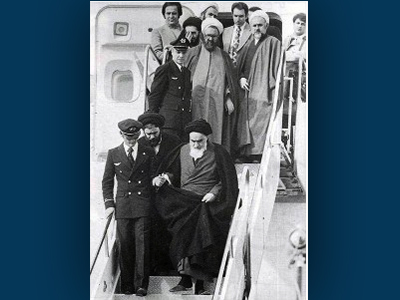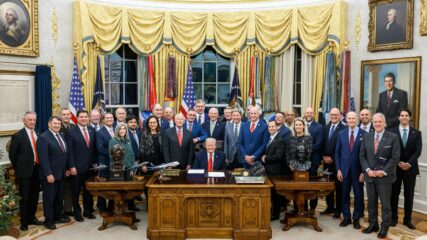February 1, 1979
After 15 years in exile Ayatollah Ruhollah Khomeini returns to Iran, two weeks after the Shah of Iran fled the country. The die was cast for massive changes in Iran’s domestic and in its foreign policy orientations. Islamic clerics would run the country, take the US-Iran relationship into a deep freeze, end decades of engagement with Israel, and spawn a hegemonic foreign policy that would threaten virtually every autocratic regime in the Middle East. Capitalizing on pent up anger held by most segments of the population against the Shah’s rule, Khomeini steered collective dissatisfaction to his new form of clerical rule.
On the day of Khomeini’s return, two million Iranians lined the streets as this key religious leader made his way from the airport to a cemetery in Tehran. Khomeini had been imprisoned by the Shah, Mohammad Reza Pahlavi, in 1963 for opposing reforms and was expelled from the country in 1965. His return would eventually lead to a March referendum which would establish an Islamic Republic in Iran.
Popular protests against the Shah over economic conditions and corruption spread throughout Iran in 1978. Despite attempts by the Shah to introduce a series of reforms, unrest continued, leading to the Shah and his family fleeing the country on January 16th.
During his exile, Khomeini continued to be critical of the Shah’s policies, while at the same time developing his concepts for Sharia rule in Iran. Following his return and the March 1979 referendum, Khomeini moved to consolidate power by seeing through the passage of two constitutions which gave ultimate authority to the Shi’ite clerics.
The Ayatollah’s return and subsequent rise to power had an impact on Iran’s Jewish community, which numbered approximately 80,000 in 1979. The new Islamic constitution granted second-class citizenship rights to Jews and much of their property was confiscated by the regime. Within two years, about one-third of Iran’s Jews left the country, with most going to Israel or the United States.
The return of Khomeini and the establishment of the Islamic Republic in Iran also changed Israeli-Iranian relations. Iran had recognized Israel de-facto in 1950, and the two had discreet diplomatic relations. Under the Shah, the two countries had close economic and military ties, with Israel receiving most of its oil from Iran. Following the revolution, ties between the countries were broken off, and Iran has since taken a strong stance against Israel and been a financial supporter of anti-Israel groups such as Hezbollah.
Cleverly, Khomeini evolved a highly sophisticated and oppositional relationship with the United States, blaming Washington for keeping the Shah in power for so many decades, decades where Iranians suffered. The taking of American and Canadian hostages for 444 days in late 1979 helped Khomeini solidify his new powers in Iran. Slowly Khomeini removed all those elements that brought him to power, establishing a highly central clerical regime that set about to spread its religious zeal to other corners of the Middle East and beyond. The Israel-Iranian relationship reached all-time lows when in the 2000s, its leaders called for Israel to be destroyed; those origins are found in the overthrow of the Shah in 1979.
A video of Khomeini’s return is available at ABC news: http://abcnews.go.com/Archives/video/feb-1979-ayatollah-khomeini-returns-12769714









